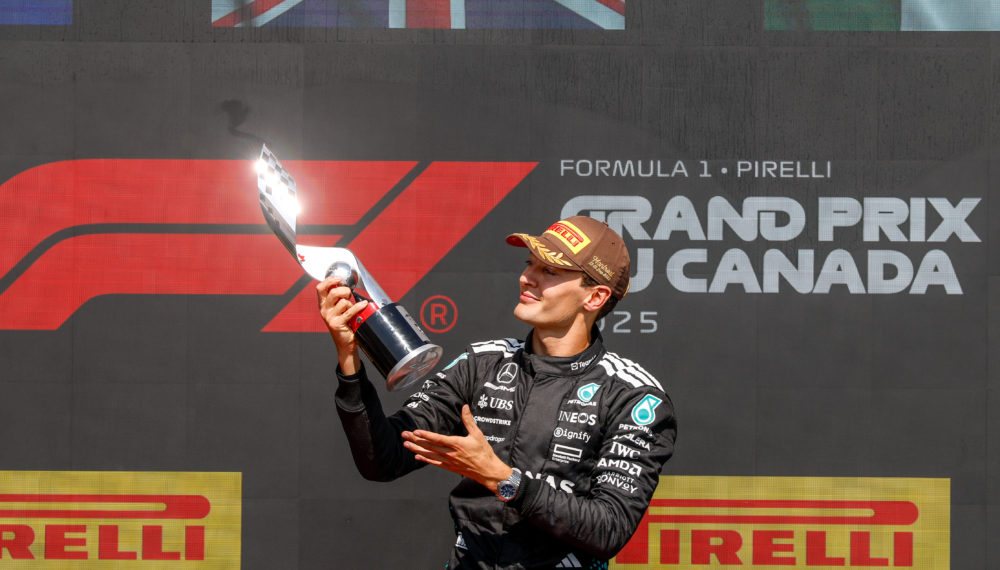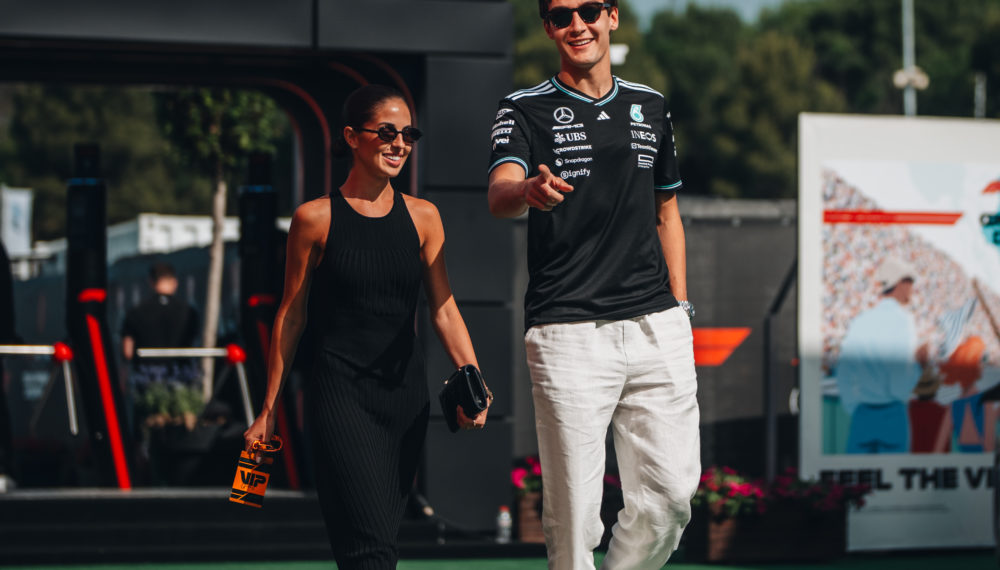From the first automotive competition in history to its return to the Formula One championship with a works team for the 2010 season, the racing activities of Mercedes-Benz tell a success story that has its roots in the early days of the automobile. Since the 19th century, racing cars, racing sports cars and rally cars made in Stuttgart have consistently been ahead of the field in sporting competition. Their triumphs are testimony to the innovative engineering, the drivers’ will to win, and efficient teamwork. Outstanding moments in the brand’s racing history include participation in the world’s first automobile competition in 1894, its first grand prix victory in 1908, the era of the supercharged car from 1922 onwards and, of course, the Silver Arrow era. These are the foundations on which recent victories in Formula One and the German Touring Car Masters (DTM) are built.
It is impossible to detach such racing success from the brand’s routine work in laboratories, workshops and production halls. On the contrary, motorsport has an interdependence with top-quality products from all other areas, since experience from the development of competition vehicles feed into series production, and the skills of the engineers from the comprehensive product portfolio of the global Mercedes-Benz brand and its predecessor companies provide the inspiration needed to constantly improve its racing cars. Particularly impressive is the direct exchange of engineering and expertise evident in the early decades of motor racing.
But in the larger context this interaction can still be found today. Engineering competence pairs up with the excitement of competition in the commitment to motor racing. In the global environment, customer demands and markets change and the company is constantly forced to adapt. Many technical innovations that have opened up new vistas in car manufacturing have their roots in pioneering developments of the race engineers. This was demonstrated, for example, at the exhibition “Fast Forward: 20 ways F1TM is changing our world”, which opened in March 2009 at the Science Museum in London. The exhibition, a joint production between Team Vodafone McLaren Mercedes and the Science Museum, showed examples of how technology developed for Formula One has also been used in such everyday technologies as cycle design, medicine and furniture-making. Organisational processes applied to pit stops in motorsport even serve as improvement models in emergency medicine.
People and cars are the protagonists of racing. But without the team and the brand, neither top drivers nor the best racing cars can win. In motorsport, therefore, every race demonstrates anew that collective performance is what makes the difference between success and failure. Team, technology and tactics must smoothly dovetail. And so the importance and excitement of racing does not end once the chequered flag is waved: a brand like Mercedes-Benz, which is fully committed to motorsport and to winning, promotes its own products far beyond the racing circuit. This is tried-and-tested knowledge at Mercedes-Benz and its predecessor brands. The Benz annual report of 1907/08 reported: “We consider the extra cost of racing an absolute necessity if we are to defend the rightful position of our brand in international competition.”
Motorsport as a leitmotif of brand history
Even in its early days, during the outgoing 19th and early 20th centuries, the automobile demonstrated its capability and reliability in the first competitions. Vehicles from Daimler and Benz took part in all the prestigious events throughout Europe and all over the world. They won races and broke one speed barrier after another in record attempts. Impressive examples of this include the first Mercedes of 1901 and the record-breaking 200 hp Benz, which in 1909 became the first automobile to exceed the magic mark of 200 km/h, held the land speed record of 228.1 km/h from 1911 to 1924, and rejoiced in the honorific title of ‘Blitzen-Benz’, the Lightning Benz.
The merger of Daimler-Motoren-Gesellschaft (DMG) with Benz & Cie. in 1926 to form Daimler Benz AG also brought about the merger of the two brands’ racing activities. The supercharged Mercedes-Benz sports cars dominated this period in the late 1920s, winning all major events. The K, S, SS, SSK and SSKL models, a family known as the ‘White Elephants’, wrote automotive history.
The Silver Arrow era, which was interrupted by the Second World War, lasted from the 1930s to 1955. Under the Silver Arrow name brand historians subsume a whole family of racing cars, record-breaking vehicles and racing sports cars which were distinguished by their silver-painted body and superb engineering. Prior to the war
Mercedes-Benz dominated the European grand prix scene with its Silver Arrows. Then in 1952 the Silver Arrows staged a comeback with the 300 SL racing sports car, back-to-back titles with the W 196 R in the Formula One world championship in 1954 and 1955 and victory in the sports car world championship with the 300 SLR (W 196 S) in 1955.
In the face of the great challenges raised by the development of new passenger cars, the Stuttgartbrand withdrew from motorsport for several years in 1955. But private teams, supported by Mercedes-Benz, carried on the motor racing tradition, especially in international rallies. Highlights were provided by a wide range of model series, including the W111, C/R107, W115/114 (Stroke Eight), W113 (Pagoda) and the G model.
Success in everything from rallies to long-distance marathons such as the Paris – Dakar came not just to Mercedes-Benz passenger cars, but also to the various Unimog models and all-terrain trucks.
Heavy-duty commercial vehicles from Mercedes-Benz were also the stars of truck racing. In 1989 Axel Hegmann driving for Mercedes-Benz won a first European Truck Racing title in Class C (14,101 cc – 18,500 cc displacement), and in 1990 he repeated the feat in Class A (max. 11,950 cc displacement). Numerous victories followed, even after revision of the classification for the 1994 season (race trucks and super race trucks). The titles in 2007 (Markus Bösiger) and 2008-2009 (David Vršecký) went to drivers for the Daimler brand Freightliner.
Alongside the racing cars and racing sports cars the company has also regularly produced record-breaking vehicles. Some have been based on experimental vehicles such as the C 111; other are derived from series vehicles, such as the Mercedes-Benz 190 E 2.3-16 Nardo of 1983.
In the 1980s Mercedes-Benz returned to the racing circuits, initially with Group C racing sports cars and racing touring cars. In the German Touring Car Championship (DTM) and the International Touring Car Championship (ITC) Mercedes-Benz was three times champion and four times runner-up between 1986 and 1996. Then in 1994 came the return to Formula One with Sauber (1994) and McLaren (from 1995). During this period world driver’s titles were won by Mika Häkkinen (twice, in 1998 and 1999) and Lewis Hamilton (2008) and one constructor’s title for Team West McLaren Mercedes (1998). There were also ten runners-up places in the championship. A new era began in 2010, when Mercedes-Benz returned to Formula One with its own works team and engaged Michael Schumacher as its number one driver. The engines from Mercedes-Benz High Performance Engines will be used not just by Team Mercedes Grand Prix Petronas, but also by Vodafone McLaren Mercedes and Force India F1.
Since 2000, Mercedes-Benz has also competed in the new DTM, taking overall victory in 2000, 2001, 2003, 2005 and 2006. In 2003 the team even swept the first three places, with Bernd Schneider as overall winner followed by Gary Paffett and Christijan Albers.
More than a century of motorsport under the three-pointed star: the history of Mercedes-Benz is inseparably linked with the history of motor racing. And in retrospect sporting involvement repeatedly has proved to be a driving force for the rapid advancement of motor vehicle technology. Viewed in this light, motorsport also opens a window on the future.






































































